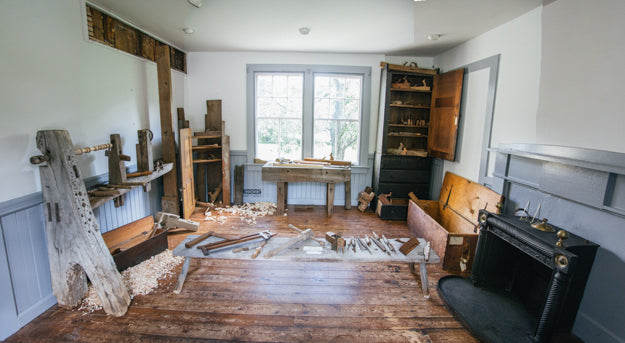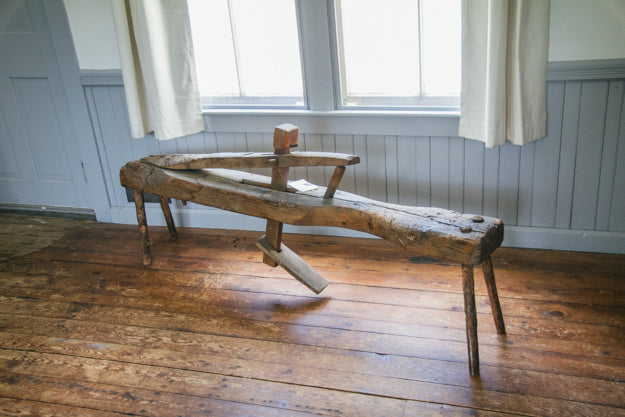
I have been looking forward to this moment for three years now. When I began researching the furniture making of Jonathan Fisher, I had no idea just how much surviving material there was. The house he built is filled with furniture he made with a collection of tools he used to build them all recorded in his surviving diary entries. That’s amazing for any period cabinet or chair maker but especially for a rural one.
Back in the 1950s and 60s, when his house was being turned into a museum, many of the objects were sold to a sister institution to ensure reliable preservation. Although the Farnsworth Art Museum in Rockland, ME owns the majority of the furniture and tools, much of it has fortunately been on long term loan to the Fisher House for tours. That is, all except the tools.
Until a woodworking nerd like me showed up on the scene a few years ago, no one really considered the tools anything worth displaying. They were archived away at the Farnsworth somewhere and, because of scheduling conflict, gaining access to them has proven challenging. The first time I saw them was two summers ago in July. I had finally arranged an hour long appointment to see the undisclosed number of tools laid out on a table. Because Tom Lie-Nielsen is a descendent of Fishers (go figure!), and Chris Schwarz was going to be in town, they (along with Deneb and other LN crew) came to see the tools as well. None of us knew what we were in for. Not only was it my first time meeting Tom and Chris (which was cool, of course), but as we walked in the door to the conference room with Fisher’s tools, I felt stunned. I had no idea how many tools we were talking and I assumed that most of them going to be post-Fisher Victorian English imports that found their way into the chest. Boy, was I wrong. Almost all of them were undeniably made by Fisher’s hand. Many name stamped, some with dates stamped (1796 – 1818). You know those moments where you almost feel dizzy out of shock? I asked myself, “Is this real?” It was real. We all went out to lunch afterward and they drove up to Blue Hill the next day where I gave them a tour of the Fisher House.
Chris and I spent the rest of that second day together, chatting and antique tool shopping. It was during that first conversation about the incredibly complete survival of this unique story that Chris told me he wanted to publish my research. Ever since that summer, (thanks to a couple grants from EAIA and SAPFM) I’ve continued the research, traveling around and developing the manuscript. Over the past two years, though, I was still waiting to see those tools again.

You can imagine my excitement when I drove down to the Farnsworth a few weeks ago with the Fisher House president, Amey Dodge, to pick up that chest of tools. They are on loan to us (I’m on the board now) for a summer exhibit I am putting together all about the furniture making of Jonathan Fisher. The heart of the exhibit is the reassembled workshop complete with lathe (and turning tools), small workbench, his “roman” workbench, chairmaker’s shaving horse, tool chest, and loads of tools. There are so many interesting and unique design features to these tools that promises to be very enlightening to us. I also have my replication of the grain painted card table I wrote about in Issue One displayed next to the original. My reproduction is there to show how it was “as new” and so that visitors can see how the fly leg and swinging top works.



I am working on the exhibit labels now to be ready for the June 29th opening. The exhibit will be open all summer and after that I can make no promises. This may be the only time you will be able to see all these objects together at once. If you miss it, you’ll have to wait for the book. Keep an eye out here and at the Lost Art Press blog. You’ll be hearing a lot more about this.






